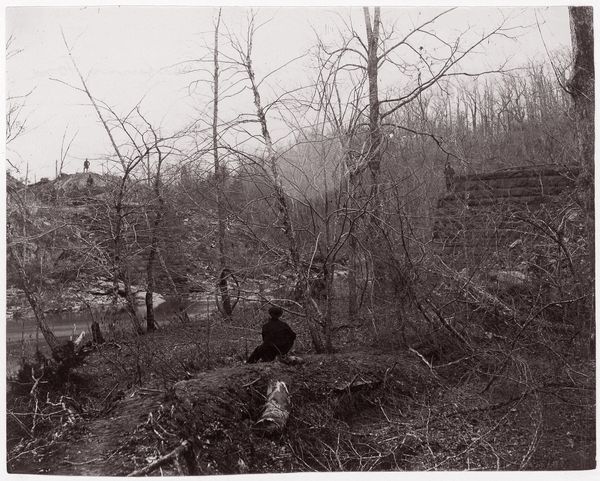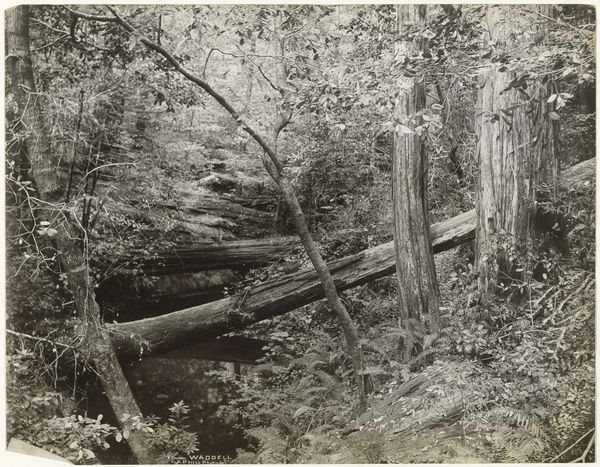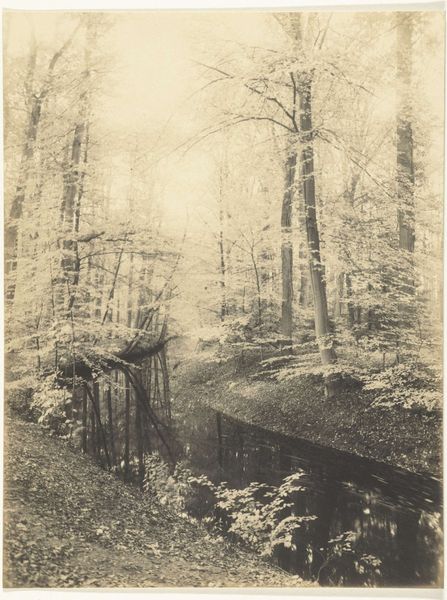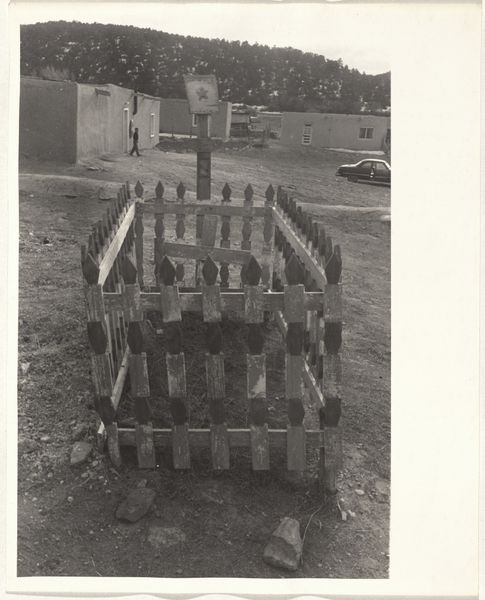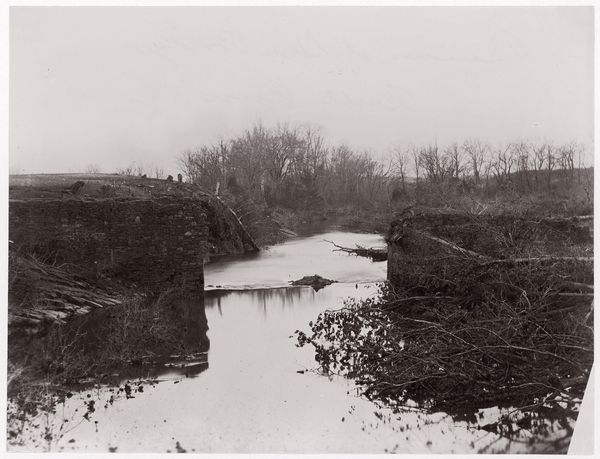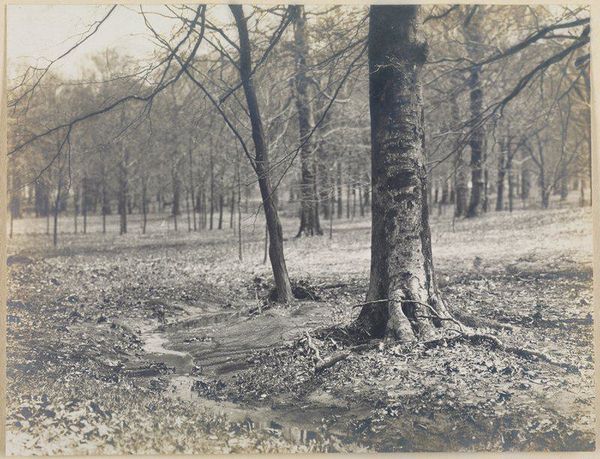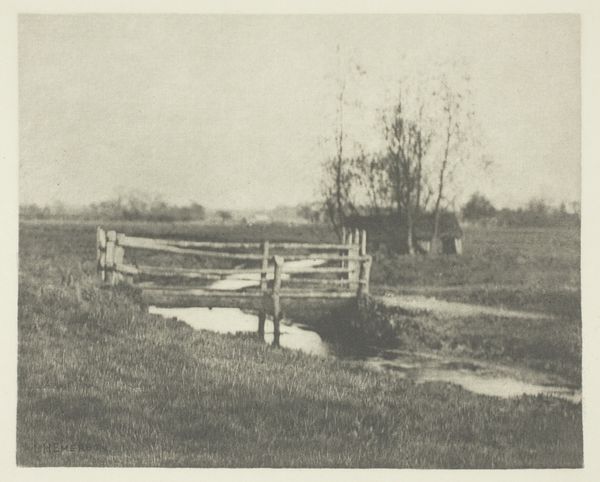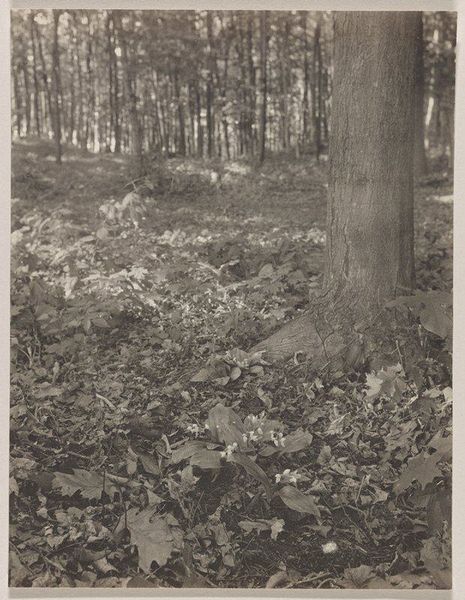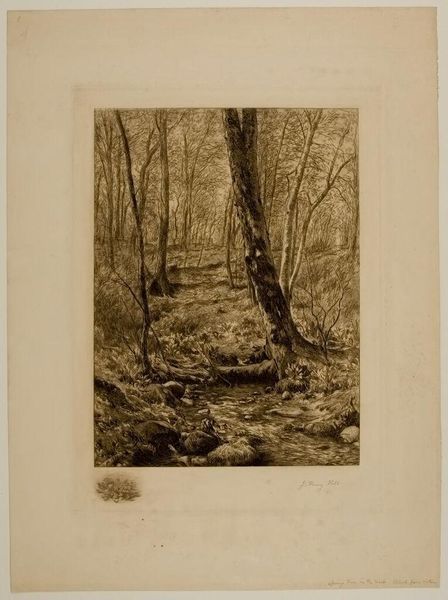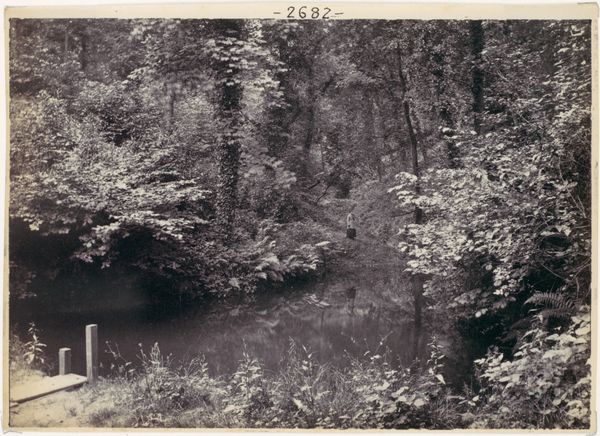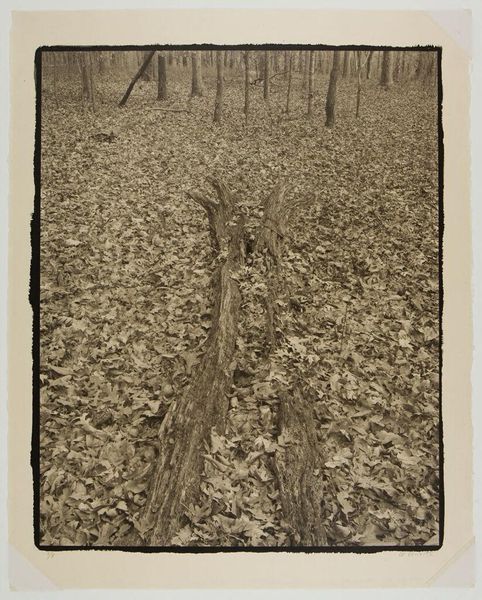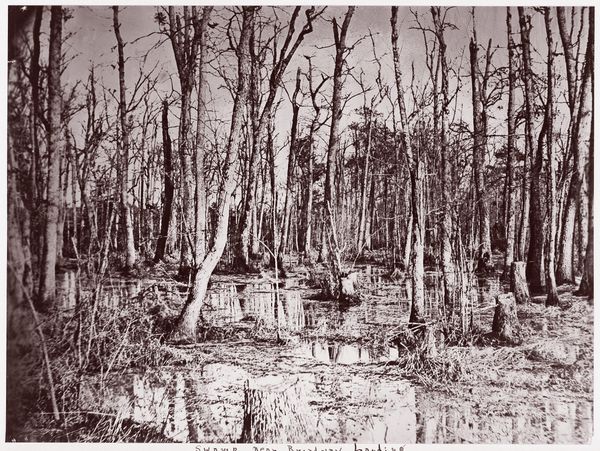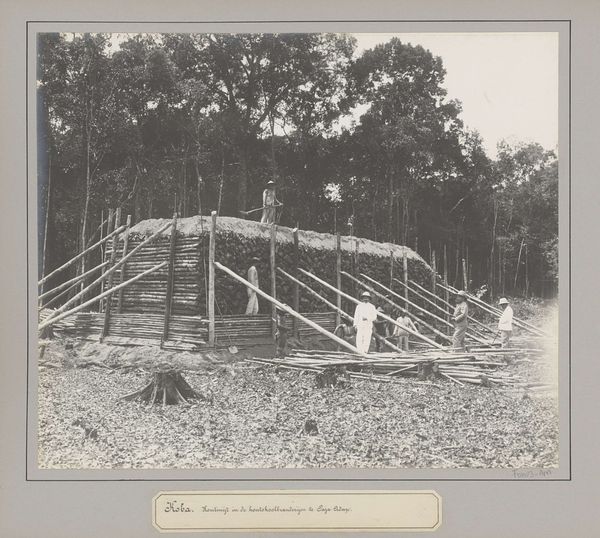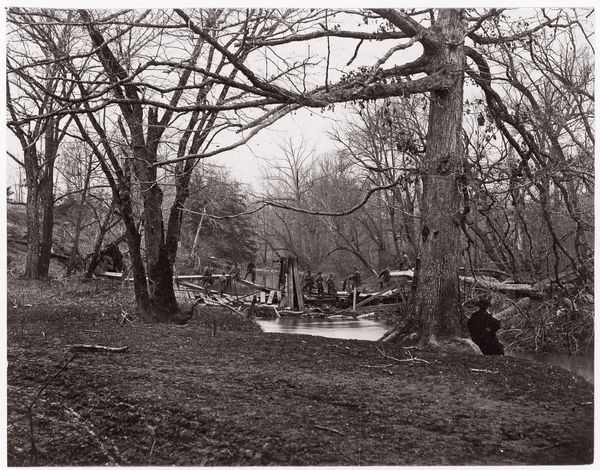
Dimensions: height 221 mm, width 165 mm
Copyright: Rijks Museum: Open Domain
Editor: So, here we have Richard Tepe’s photograph "Eendekooi," a gelatin silver print made sometime between 1900 and 1930. I’m immediately struck by the composition – this long structure leading into the depths of the woods, almost like a path into another world. What do you see in this piece? Curator: The "Eendekooi", or duck decoy, is rich in symbolic imagery connected with both the human manipulation of nature and our deep-seated need for control. Think about the formal elements: a constructed path and cage contrast with the seeming wildness of nature; the darkness presses in around a narrow corridor, guiding the viewer's eyes. Editor: So, this isn’t just a landscape, but something much more deliberate? Curator: Exactly. Consider the duck decoy itself. It is a symbol of carefully planned deception, a tool designed to lure creatures to their capture. The image, in that sense, speaks volumes about our relationship with the natural world. Editor: Deception…that’s interesting, especially in photography. Isn’t it supposed to capture reality? Curator: It can, but remember that photography is also a crafted image, and therefore also a form of construction. The light, shadow, and perspective have all been meticulously chosen and composed. Can you perceive any element in this image, seemingly straightforward at first glance, that adds symbolic weight? Editor: The bare trees, maybe? They give it a feeling of waiting, of expectation. Curator: Precisely! Those barren trees speak to cycles, endings and beginnings, vulnerability… even the stillness suggests an anticipation, a tension before the trap is sprung. What's so haunting is this photograph freezes that in time. Editor: I’m seeing it so differently now. Thanks for revealing all the symbolic elements I overlooked.
Comments
No comments
Be the first to comment and join the conversation on the ultimate creative platform.
